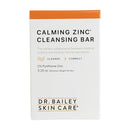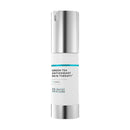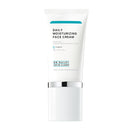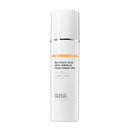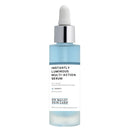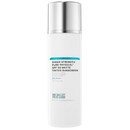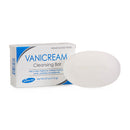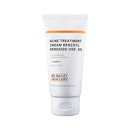What Are The Skin Symptoms Of Acne Rosacea?

Insights on Acne Rosacea from the Dermatologist
This is the second article in a five-part medical article series on acne rosacea. As a dermatologist, my goal is to give you practical information about rosacea. If, like me, you suffer from rosacea, you'll have a better understanding of what's happening on your skin. A rosacea-prone complexion can be really challenging!
All of the information here comes from my 30-plus years practicing dermatology and the experiences of my many patients with rosacea.
- In the first article of this series, I presented an overview of rosacea.
- In this article, I'll describe the symptoms of rosacea in detail to help you better understand the disease.
- In the third article, I'll summarize what I've found to be important, general supportive skin care tips that help prevent rosacea flare-ups and maintain rosacea remissions.
- I'll share with you what natural and lifestyle approaches you might want to consider to help your rosacea-prone complexion.
- In the final post, I'll discuss my dermatologic treatment approach to rosacea, including medicines, procedures and diet advice.
Get skin care tips from my dermatology practice here.
This includes the skin care routine that I created for my patients in my Rosacea Skin Care Therapy Kit.
What are the symptoms of acne rosacea symptoms?
Rosacea Onset:

The symptoms of rosacea may develop slowly over years or occur all of a sudden. Acne rosacea is a form of adult acne and typically comes on in the 20s or later in life. Bright red rosy cheeks in childhood may indicate a predisposition to rosacea later in life. Rosacea is more common in people with fair skin pigmentation from Northern European and Celtic parts of the world but all skin tones and ethnicities can develop rosacea.
Rosacea Symptoms:
Acne rosacea pimples
The pimples of acne rosacea are most commonly tender red bumps which may or may not come to a whitehead.
- The pimples usually occur on the central face including the central forehead, cheeks, nose, and chin. They're more like a tender inflammatory nodule than the puss-filled pimples characteristic of teenage acne vulgaris.
-
Pimples of rosacea may come up quickly or can take weeks to go away. They are easily irritated if you apply harsh acne medicines to them, thus behaving more like a rash than acne. Also, unlike regular acne vulgaris, adult acne rosacea does not cause blackheads.

Facial redness, sensitivity, swelling and scale
General blotchy skin redness, irritation, swelling and scale often accompany the pimples of acne rosacea making for a really frustrating facial skin mess.
-
This is compounded by the fact that people prone to rosacea are also prone to facial seborrheic dermatitis (a scaly red facial rash) and both conditions may be present at the same time. Both conditions need treatment in order for the skin to completely improve. And, my treatment recommendations for rosacea also work for seborrhea.

- The inflammation of rosacea may be related to skin mite overgrowth with demodex mites. I discussed some new scientific information connecting mites to rosacea in a recent post, and you can bet that I like to treat mites as part of my rosacea therapy.
Oily skin
Most rosacea patients complain of excessively oily skin and clogged pores. But some have dry, sensitive skin. These two differences impact which rosacea treatment products I recommend.
Predominant facial capillaries prone to flushing
Broken capillaries and facial flushing from rosacea may be constant or occasional.
-
The longer you've had rosacea, the "bigger better more" your facial capillaries become. The capillaries aren't actually "broken," they're just big and visible.

- It's important to understand that normally the skin is covered by a fine and invisible network of capillaries. The flushing of a normal capillary network gives your cheeks a charming, pink blush. In rosacea, however, your robust capillary network is visible to the naked eye.
- The flushing of rosacea capillaries turns you as red as a beet, and sometimes, it is so intense that your skin hurts. These abnormal rosacea capillaries can be large, long and straight, especially in the nose creases. Alternatively, they can be a dense network of tiny blood vessels branching like a spider's web all over the surface of your cheeks, chin and nose.
- Not only are facial rosacea capillaries larger, more numerous and visible, they also have an abnormal tendency to engorge when you're exposed to a variety of stimuli including heat, exercise, spicy food, alcohol, emotion, climactic temperature change, a menopausal hot flash, and sometimes, just for no reason at all.
- The parts of your face most prone to develop these abnormal rosacea blood vessels are the central face where your pimples from acne rosacea are the worst. I occasionally also see rosacea patients with large, dark and deep capillaries on the sides of the cheeks near the ears, too.
Sebaceous hyperplasia
Oil gland enlargement from acne rosacea is fascinating at the same time it's annoying. It shows up in two ways:
-
Small yellow bumps on the skin surface (called sebaceous hyperplasia papules). These growths are lumpy and have a central indentation that's actually the opening of the pore.

- General enlargement, thickening and a bulbous shape to the nose due to a confluence of enlarged oil glands under the skin surface (this may be a subtle roundness of nasal shape or an extreme thickening and lumpiness like the nose of the actor W.C. Fields). Generalized sebaceous hyperplasia of the entire nose is called rhinophyma.
Rhinophyma
Severe, nasal enlargement from oil-gland growth isn't common. Most of the time, rhinophyma is simply a subtle rounding of the shape of the nose. That said, when well developed, a rhinophymatous nose can be bulbous, with irregular nodular areas that create asymmetry and significant nasal enlargement.

(Science nerd digression: Sebaceous hyperplasia is fascinating because the skin bumps that you see actually look like big versions of what an oil gland looks like under the microscope; every pore has an oil gland, whether there's a hair coming out of the pore or not. Normally, the pore's oil gland is an invisible, microscopic creamy-colored lobular blob that sits on the side of the pore and opens into it. It's yellow and lumpy, much like the yellow sebaceous hyperplasia papules seen in rosacea. When the sebaceous gland grows in rosacea, it encircles the pore and becomes a donut-like bump with a central hole where the pore is. Understanding this explains one of my favorite ways to get rid of sebaceous hyperplasia papules — stay tuned for that in the last post.)
Ocular rosacea
Rosacea often involves your eyes.

The whites of your eyes (the sclera) can get inflamed, feel gritty and turn red. Your lash line can swell, itch, redden, and produce a grainy matter. This usually happens when your face is really inflamed, but it also may be present as a subtle chronic itch on the lash line. Most topical rosacea products are designed for skin treatment, not eye care, making treatment of ocular rosacea a challenge.
Other commonly asked questions about rosacea:
Can you get rosacea all of a sudden?
Yes, your propensity for it may have been there all along and then something tipped your skin over the edge and you developed the symptoms of acne rosacea. The good news here is that you can also control it and revert your complexion back to how it was before. That is the information I'll cover in the next posts.
Can you develop rosacea later in life?
Yes. Again, you may have had the propensity but never manifested the symptoms. Our skin undergoes huge changes with age including allowing the growth of more facial Demodex mites and Pityrosporum/Malassezia yeast forms. These two organisms are associated with rosacea and the facial inflammatory condition that often accompanies rosacea called seborrheic dermatitis. Barrier integrity of the skin also weakens with age, making rosacea symptoms more likely.
Why do I get a sudden rosacea flare up?
Rosacea is capricious - hard to control and easy to trigger. That's why I have taken a comprehensive and holistic approach to rosacea over the years in my practice:
- I help my patients understand the skin problem including what triggers and what helps to control it.
- I build a Complete Skin Care Routine to help give the skin what it needs to resist a rosacea flare up. We add prescription topical medicines to this routine if needed but the foundation of the routine is non-prescription skin care.
- I teach them about diet and lifestyle choices to reduce overall physiologic inflammation, thereby providing less 'fuel for the fire' when it comes to rosacea inflammation.
- We use oral medicines, laser, light and electrocautery treatments when appropriate.
I'm discussing my holistic approach to treating rosacea in this article series.
Can you get rosacea symptoms on skin other than the face?
Yes, rosacea symptoms can extend down your neck and onto your chest. On the neck and chest, I see mostly the enlarged, hyperactive capillaries. Occasionally, the skin breaks out in pimples and a red scaly rash. Rosacea can coexist with Pityrosporum folliculitis, a common cause of back and chest pimples.
My Rosacea Therapy Skin Care Kit gives you a skin care routine for involvement on both the face and neck.
My Back and Chest Acne Kit treats pimples on the chest and back.
The bottom line with the symptoms of rosacea:
The take-home message here is that acne rosacea is common — so common that it's almost a normal skin type for Caucasian skin.
The skin symptoms of acne rosacea may be subtle or severe. There are four main rosacea symptoms (pimple-like lesions, sensitive skin problems, oil gland misadventures and capillary misbehavior). You don't have to suffer from all four to qualify for the diagnosis.
My next post will discuss general skin care tips to prevent rosacea flare-ups. My fourth and fifth articles in this rosacea series will include my treatment approach for rosacea.
Click here for my Dermatologist's Recommended Skin Care for Rosacea
My 5 Article Series on Rosacea:
What Are the Skin Symptoms of Acne Rosacea? (This post)
Rosacea Skin Care Tips from My Dermatology Practice
Acne Rosacea; Dermatologist's Natural Treatment of Rosacea
Prescription Medication and Cosmetic Procedures to Treat Rosacea
Author: Dr. Cynthia Bailey M.D. is a Board Certified dermatologist practicing dermatology since 1987. She has done well over 200,000 skin exams during her career and authors the longest running physician written skin health blog in the world.


